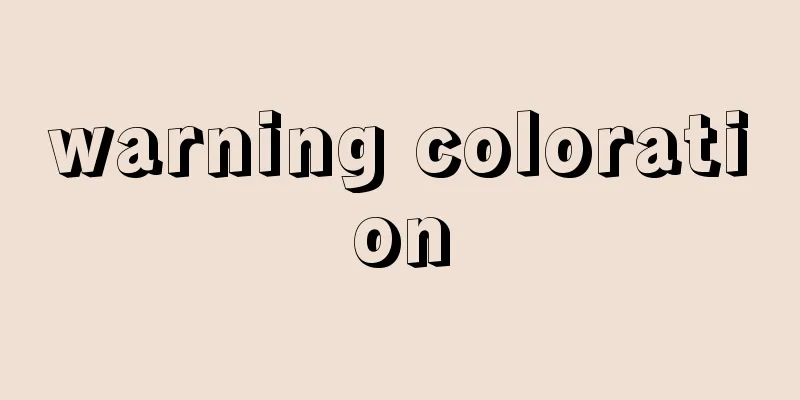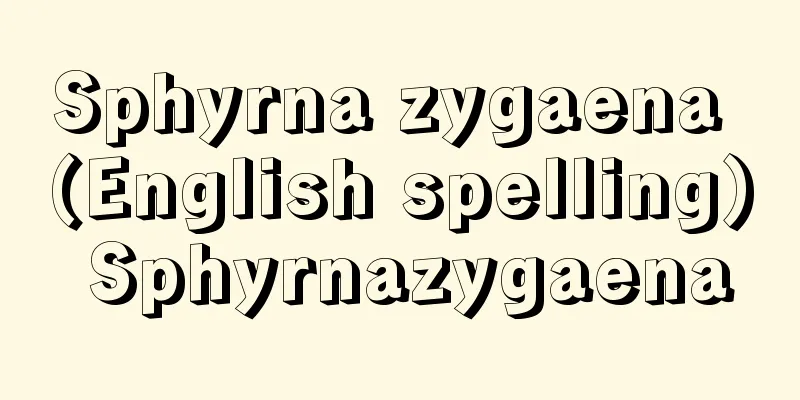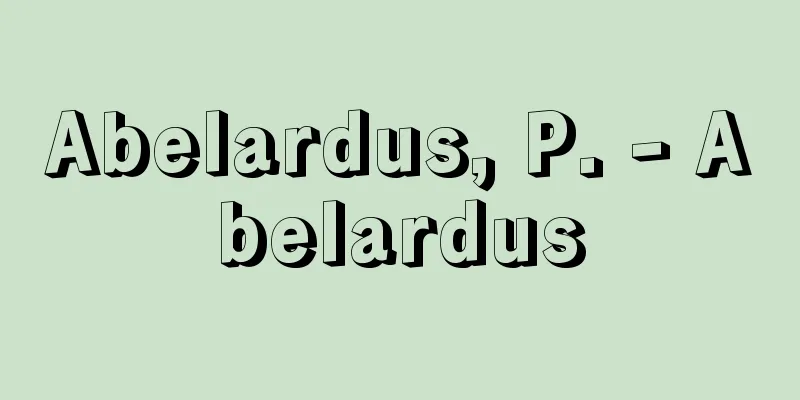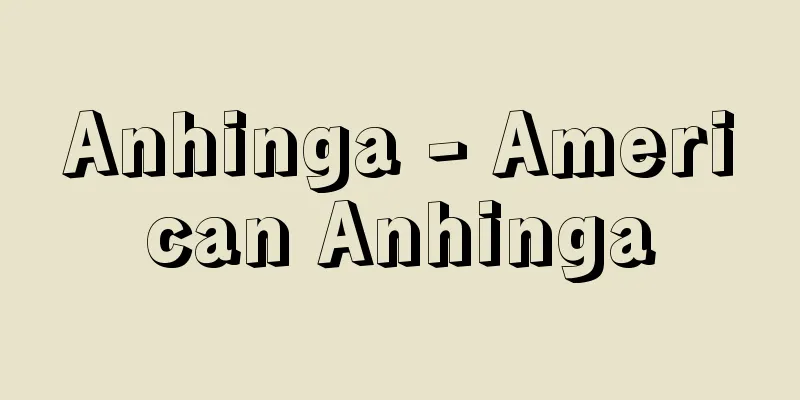warning coloration

|
...The former are classified as protective colors, and are colors that are thought to increase the survival value of an animal by making it less conspicuous. The latter, on the other hand, are colors that increase the survival value of an animal by deliberately making it more conspicuous. They are classified as recognition coloration, which helps to detect and recognize conspecifics; threatening coloration, which scares predators; warning coloration, which indicates that the animal is poisonous or tasteless and thus avoids being preyed upon; and mimicry, which deceives predators by having a body color or appearance similar to that of other animals that have warning colors. However, in almost all cases, the body color of an animal has multiple functions. For example, the color and pattern of a butterfly's wings are both recognition colors and have a concealing function. From [Camouflage]… Furthermore, cryptic coloration is combined with signal coloration, which has an adaptive meaning in the exact opposite way, and its effect is strengthened. Signal coloration is a body color that is very conspicuous, and alerts the presence of the animal to others, thereby providing the animal with an advantage. It can be divided into threatening coloration that frightens enemies (such as the eye patterns of caterpillars and moths), warning coloration that alerts others that the animal is poisonous or dangerous (such as the yellow and black stripes of bees, the flashy red and black hair of caterpillars, and the flashy spots of poisonous fish, frogs, and snakes), mimicry that imitates the warning coloration or body shape of poisonous animals even though it is not actually poisonous or dangerous, and recognition coloration that allows individuals of the same species to recognize each other, such as males and females, or parents and children (such as the wing color of butterflies, or the body color of mammal and bird chicks that is completely different from that of their parents). Even animals with such signal coloration often have both types of color. … *Some of the terminology explanations that mention "warning coloration" are listed below. Source | Heibonsha World Encyclopedia 2nd Edition | Information |
|
…前者はいわゆる保護色の範疇(はんちゆう)に入るもので,その動物の存在を目だたなくすることによって,生存価を高めると考えられるような色である。後者は逆に,わざわざその存在を目だたせることによって生存価を高めるもので,同種異性の発見,認知に役だつ認識色recognition coloration,捕食者を驚かす威嚇色threatening coloration,自分が有毒ないし不味であることを示して捕食されることを避ける警告色(警戒色)warning coloration,警告色をもった他動物に似た姿,体色をもつことによって捕食者を欺く擬態とに分けられる。しかし,ほとんどすべての場合,動物の体色は多面的な機能をもっており,例えばチョウの羽の色,模様は認識色であると同時に隠蔽的機能をもつ。… 【保護色】より… さらに隠蔽色は,まったく逆の形で適応的意味をもつ体色,つまり標識色signal colorationと組みあって,その効果を強めている。標識色というのは,きわめて目だちやすい色彩をとることによって,その動物の存在を相手に知らせ,それによってその動物が利益を得るような体色のことで,敵をびっくりさせる威嚇色threatening coloration(芋虫やガの目玉模様など),自分が有毒,危険な動物であることを相手に知らせる警告色warning coloration(ハチの黄と黒の縞模様,毛虫の赤と黒のはでな毛の色,毒をもつ魚,カエル,ヘビのはでな斑紋など),ほんとうは有毒でも危険でもないのに,有毒動物の警告色や体形をまねた擬態,および同じ種の動物個体間で,雌雄,親子などが認識しあう認識色(チョウの翅の色,哺乳類・鳥類の雛の親とまるでちがう体色など)に分けられる。 このような標識色をもつ動物にも,二つの形の色をともにそろえている場合が多い。… ※「warning coloration」について言及している用語解説の一部を掲載しています。 出典|株式会社平凡社世界大百科事典 第2版について | 情報 |
Recommend
Milford Sound
An inlet on the west coast of the southern part of...
Bone metastasis cancer
All cancers that occur in the bones are called mal...
Ostia - Ostia (English spelling)
An ancient Roman city at the mouth of the Tiber R...
Chillon
…When Rousseau published his novel “New Héloïse” ...
Snail (cochlea) - Snail
Also known as Dendenmushi (breathworm) or Maimai (...
Washington System
This refers to the postwar international order in...
Weledarii - Weledarii
…Even in the Roman period, according to Caesar, c...
Bondol, J.
…A set of seven tapestries on the theme of the Ap...
British Economic Association
...A world-renowned academic journal of economics...
Galapagos tortoise - Galapagos tortoise
...They are called giant tortoises because the sh...
Takanori Kyogoku
1858-1928 A member of the aristocracy from the Me...
Psilocybe venenata (English spelling) Psilocybevenenata
...Since then, no cases of poisoning due to the w...
Zhang Wen-tian (English name)
[Live] Guangxu 26 (1900). Jiangsu, Nanhui [Died] J...
Laskar Rakyat (English spelling)
…From its establishment in 1943 until the end of ...
Alkyl mercury - alkyl mercury
A type of organic mercury. A general term for halo...









